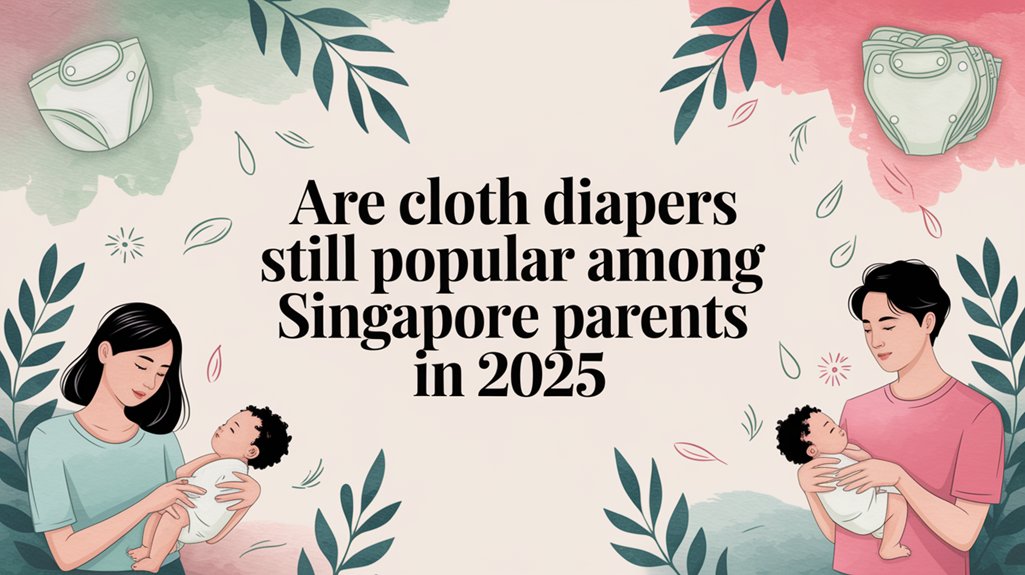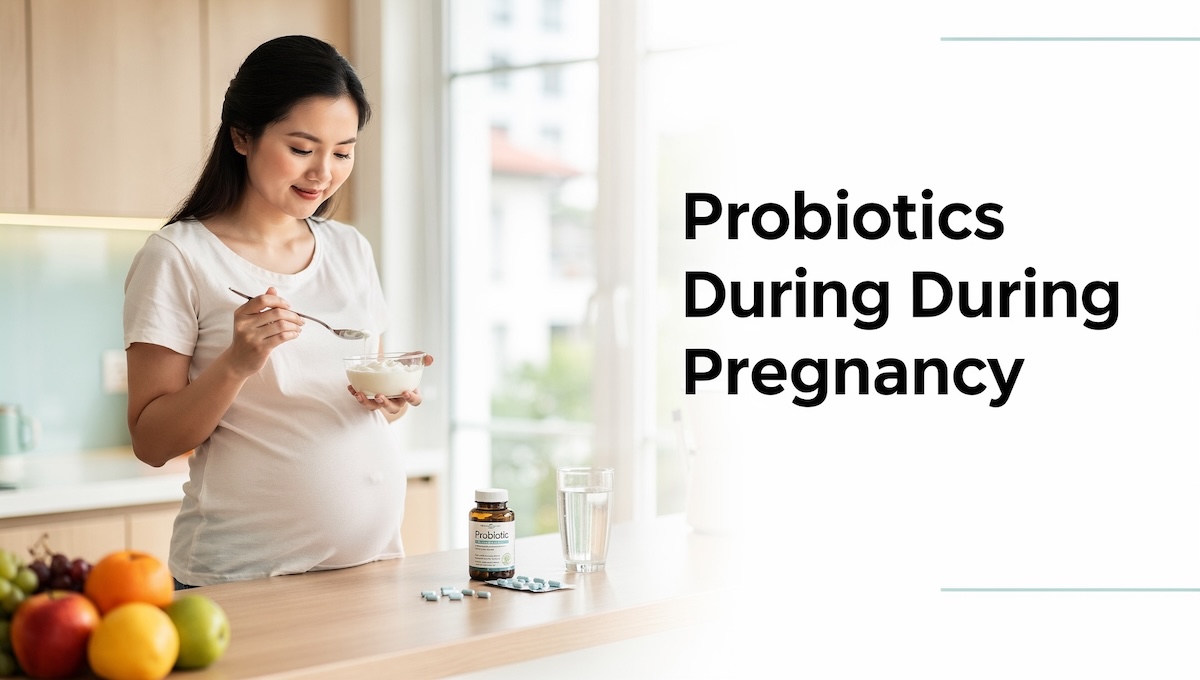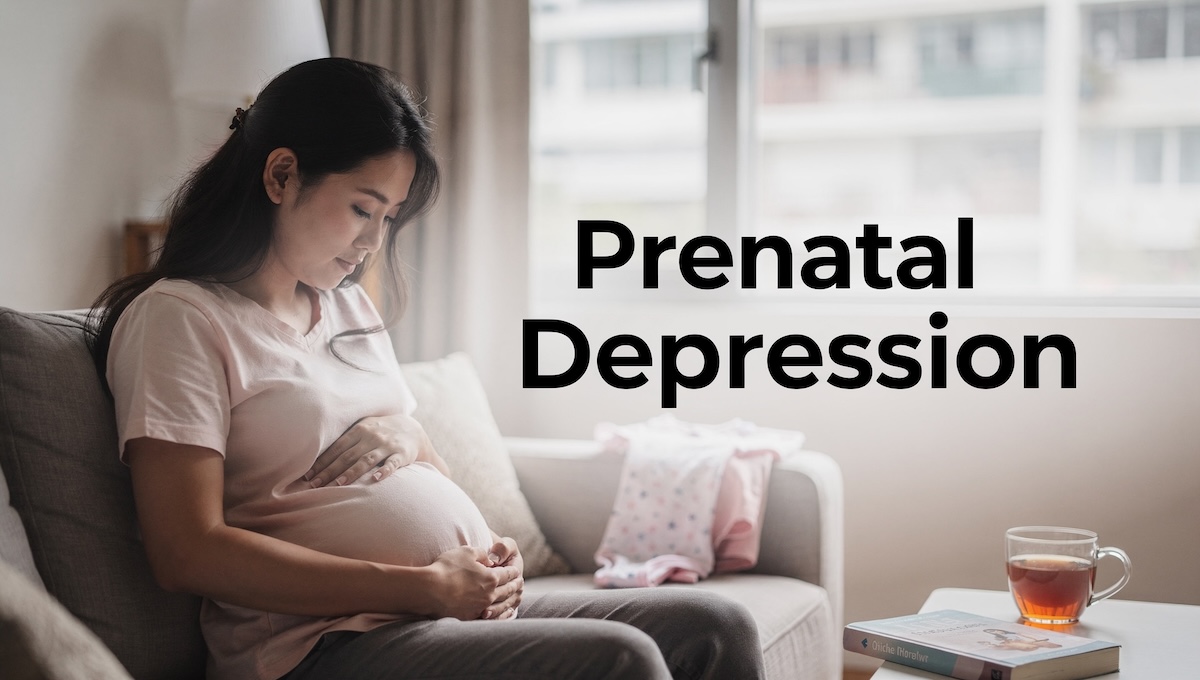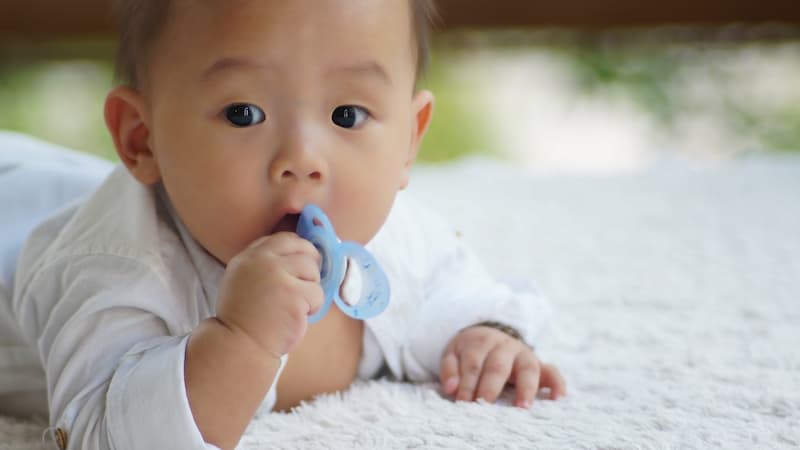As the parenting landscape continues to evolve in Singapore, many new parents find themselves wondering whether cloth diapers will remain a relevant choice in 2025. This comprehensive guide examines the current popularity of cloth diapers among Singapore parents, exploring environmental considerations, cost comparisons, and practical realities of cloth diapering in our unique climate and urban setting. Whether you’re considering buying cloth diapers for your baby or simply curious about current parenting trends, we’ll help you understand why many Singapore families are returning to this traditional yet modernized approach to diapering.

Current Popularity of Cloth Diapers in Singapore (2025)
The cloth diaper market in Singapore has seen steady growth, with a 15% increase in sales from 2023 to 2025, according to recent industry reports. While disposable diapers still dominate the overall market, cloth diapers now account for approximately 28% of the diaper market in Singapore, up from just 18% in 2020.
This growth reflects changing attitudes among Singaporean parents, particularly among millennial and Gen Z parents who prioritize sustainability alongside practicality. A recent survey conducted by a local parenting platform found that 42% of new parents in Singapore have tried cloth diapers, with about 30% using them as their primary diapering method and another 35% adopting a hybrid approach.
The popularity surge can be attributed to several factors. Increasing environmental awareness plays a significant role, as Singapore’s limited landfill space makes waste reduction a pressing concern. Modern cloth diapers have also addressed many of the inconveniences associated with traditional cloth diapering, making the switch more appealing to contemporary parents.
Cloth diaper usage is also influenced by financial comparisons, as many parents find them to be more cost-effective in the long run. Social influences, including the rise of social media, have further contributed to the trend, with many parents sharing their positive experiences and tips online.
Additionally, the robust online community and support system for cloth diapering in Singapore has made information and resources more accessible than ever before. Parents can easily find guidance on starting their cloth diapering journey, troubleshooting issues, and connecting with other cloth diapering families.
Types of Cloth Diapers Popular in Singapore
The cloth diaper market in Singapore offers various options to suit different parenting styles and preferences. Understanding these different types helps parents make informed choices based on their specific needs.
Pocket Diapers
Pocket diapers dominate the Singapore cloth diaper market, accounting for approximately 65% of cloth diaper sales. These diapers feature a waterproof outer layer and a stay-dry inner layer with a pocket opening where parents can stuff absorbent inserts. Their popularity stems from their versatility and ease of use.
Singapore parents particularly appreciate pocket diapers because:
They dry quickly in our humid climate
The inserts can be customized for different situations (daytime, nighttime, heavy wetters)
They’re relatively easy for caregivers and grandparents to use
They come in a wide variety of stylish prints and colours
Local brands like Moo Moo Kow and Little Lalang offer pocket diapers specifically designed for Singapore’s climate, with materials that handle humidity better than some international brands.
All-in-One Diapers
All-in-one diapers (AIOs) are gaining popularity among busy Singapore parents who value convenience above all. These diapers have absorbent material sewn directly to the waterproof outer shell, functioning most similarly to disposables in terms of ease of use.
While they tend to be more expensive and slower to dry in Singapore’s humidity, many parents appreciate them for specific situations:
For caregivers or daycare centres unfamiliar with cloth diapers
When out and about for quick changes
For parents who want the simplest possible cloth diapering system
Prefold Cloth Diapers
Traditional prefold cloth diapers maintain a niche but dedicated following in Singapore. These rectangular pieces of absorbent fabric must be folded and secured with either diaper pins or Snappi fasteners and then covered with a waterproof cover. Essential to this system are cloth diaper covers, which serve to contain the wetness and mess of the inner prefold. These covers are designed to be practical and cost-effective, often allowing for reuse between washes, thus reducing laundry.
While not as popular as modern options, prefold diapers have advantages that appeal to some Singapore parents:
They’re the most affordable cloth diaper option
They’re highly durable and can last through multiple children
They’re extremely versatile and can be folded in different ways as the baby grows
They wash and dry easily in Singapore’s climate
Customizable Absorbency
One of the major advantages of modern cloth diapers that appeals to Singapore parents is the ability to customize absorbency based on specific needs. Parents often add more inserts for nighttime use or when their baby is going through a heavy wetting phase.
This customization is particularly valuable in Singapore’s climate, where babies may need more frequent changes due to the heat and humidity. By adjusting the absorbency, parents can keep their babies comfortable while minimizing leaks and blowouts.
Environmental Awareness and Impact
Environmental considerations have become increasingly important for Singapore parents when choosing diapering options, especially given our country’s limited land resources. Many parents are now weighing the pros and cons of reusable cloth diapers compared to disposable options, driven by growing interest and inquiries about the functionality, practicality, and challenges of these eco-friendly diapering solutions.
Decomposition Time of Disposable Diapers
Research has shown that a single disposable diaper can take up to 1,000 years to decompose completely. With the average baby using 6-8 diapers daily, a child typically goes through 5,000-6,000 disposable diapers before potty training. This creates a substantial waste management challenge, particularly relevant in land-scarce Singapore.
Waste Production Comparison
The stark contrast in waste production between cloth and disposable options has become a compelling factor for environmentally conscious parents. A child using disposable diapers will contribute approximately 900-1,000 kg of non-biodegradable waste to landfills before potty training. In contrast, a cloth-diapered child produces minimal additional solid waste beyond what can be flushed.
For Singapore, where the Semakau Landfill is projected to reach capacity by 2035, this waste reduction is particularly significant. Each family that chooses cloth diapers helps extend the lifespan of our limited landfill space.
Environmental Cost of Laundering
While cloth diapers do require water and electricity for washing, studies comparing the overall environmental impact still generally favour cloth over disposables, especially when diapers are:
Used for multiple children
Washed in full loads
Line-dried (which is practical year-round in Singapore’s climate)
Washed with eco-friendly detergents
A Singapore household typically uses about 20-30 litres of additional water per day for cloth diaper laundry. While this represents an environmental cost, it’s offset by the reduction in manufacturing resources and landfill space required for disposables.
Carbon Footprint Considerations
The carbon footprint comparison between cloth and disposable diapers reveals interesting patterns. While disposables have a higher manufacturing and waste management carbon footprint, cloth diapers contribute to emissions through washing and drying.
However, in Singapore’s context, where line drying is possible year-round, the carbon footprint of cloth diapering can be significantly reduced. Using cold water washing cycles further minimizes the environmental impact, making cloth diapers a more eco-friendly choice for many families.
Cost Comparison: Financial Analysis for Singapore Families
Financial considerations remain a significant factor for many Singapore parents when choosing between cloth and disposable diapers.
Initial Investment Required
Starting with cloth diapers requires an upfront investment. In Singapore, a basic cloth diaper stash costs:
S$300-600 for a full-time basic stash of pocket diapers
S$600-900 for premium brands or all-in-one systems
S$150-300 for a prefold system with covers
To help manage these costs, many parents turn to community support and resource sharing. For instance, there are Facebook groups where parents can purchase cloth diapers through organized group buys, making it more affordable and convenient.
While this initial outlay is higher than simply buying a pack of disposables, the long-term financial benefits are substantial.
Monthly Savings Comparison
The monthly cost difference becomes apparent quickly:
Disposable Diapers:
Average cost per diaper in Singapore: S$0.35-0.50
Monthly usage (180-240 diapers): S$63-120
Annual cost: S$756-1,440
Cloth Diapers:
Additional utilities (water, electricity): S$15-25 monthly
Cloth-safe detergent: S$10-15 monthly
Total monthly running costs: S$25-40
Annual running costs: S$300-480
This represents a monthly saving of S$38-80 with cloth diapers after the initial investment period.
Long-Term Financial Impact
Over the typical 2.5-3 year diapering period, the financial difference becomes substantial:
Total Cost Over 2.5 Years:
Disposable diapers: S$1,890-3,600
Cloth diapers (including initial investment): S$1,050-1,800
This represents savings of S$840-1,800 for one child alone. If the same cloth diapers are used for a second child, the savings nearly double as only running costs continue.
Resale Value Consideration
Well-maintained cloth diapers in Singapore retain significant resale value, often selling for 40-60% of their original price. This further improves the financial advantage, especially for parents who maintain their diapers in good condition.
The active second-hand cloth diaper market in Singapore, particularly through Facebook groups and Carousell, makes it easy to recoup some of the initial investment when children outgrow their diapers.
Comfort and Health Considerations
Health considerations have become increasingly important in parents’ diapering choices, with greater awareness of what materials come into contact with their babies’ skin.
Reduced Chemical Exposure
Cloth diapers, especially cotton diapers, offer parents greater control over what touches their baby’s skin. Unlike many disposables, cotton diapers:
Contain no added fragrances
Have no chlorine bleaching
Lack the sodium polyacrylate gel that absorbs liquid in disposables
Contain no phthalates, which are sometimes used in plastic backing
For babies with sensitive skin, this reduced chemical exposure can make a significant difference in comfort and health. Additionally, cotton diapers are known for their softness and breathability, which help reduce the risk of diaper rash. Their reusable nature also makes them an environmentally friendly choice for modern parents.
Better Air Circulation
The natural fibres used in cloth diapers allow for better air circulation compared to plastic-backed disposables. This improved breathability can be particularly beneficial in Singapore’s hot and humid climate, helping prevent heat rash and reducing moisture-related skin problems.
Diaper Rash Considerations
While conventional wisdom once suggested cloth-diapered babies experienced more diaper rash, modern cloth diaper designs and materials have changed this dynamic. Many Singapore parents report fewer rash issues with clothes, particularly when:
Diapers are changed frequently
Proper washing routines eliminate detergent buildup
Natural fibre inserts are used against sensitive skin
The key factor in preventing diaper rash with cloth diapers is changing frequently enough that babies don’t sit in moisture for extended periods.
Fewer Blowouts with Cloth
A practical benefit frequently mentioned by cloth diapering families is the reduced incidence of blowouts. The elastic around the legs and back of properly fitted cloth diapers contain messes more effectively than many disposables, resulting in fewer outfit changes and less laundry overall—a significant advantage for busy parents.
Practical Realities of Cloth Diapering in Singapore
The practical aspects of managing cloth diapers in Singapore’s urban environment and climate deserve special consideration.
Wash Cycle Routines
Singapore’s climate influences optimal cloth diaper washing routines. To effectively wash cloth diapers, follow these detailed steps:
Pre-rinse or quick wash to remove waste, ensuring solids are rinsed off
Choose between wet and dry pails for storage before the main wash
Main wash with cloth diaper-safe detergent
Extra rinse to ensure all detergent is removed
Washing every 2-3 days to prevent odour buildup in Singapore’s humidity
Many parents find that washing cloth diapers adds just 2-3 additional loads of laundry per week, which is manageable for most families.
Storage Solutions
High-rise apartment living, common in Singapore, requires creative solutions for diaper storage:
Wet bags with zippered closures contain odours effectively for day use
Hanging diaper pails with mesh liners work well in limited spaces
Dry pail methods (storing without water) prevent humidity issues
The compact storage options available make cloth diapering feasible even in smaller HDB apartments.
Line Drying Benefits
Singapore’s climate offers a significant advantage for cloth diapering families: year-round line drying possibilities. This:
Reduces energy usage compared to dryer use
Takes advantage of natural UV disinfection from the sun
Helps remove stains naturally
Extends the lifespan of elastic and waterproof materials
Most cloth diapers dry completely within 3-6 hours on a typical Singapore day, making dryers unnecessary for most families.
The Growing Cloth Diaper Community in Singapore
The support system for cloth diapering in Singapore has expanded significantly, making the learning curve much less steep for new parents.
Local Support Groups
Singapore boasts several active cloth diapering communities:
The “Cloth Diapering Singapore” Facebook group has over 8,000 members sharing advice
Regular meetups and workshops for new parents interested in cloth
Dedicated cloth diaper retailers offering personalized guidance
Parenting groups that include cloth diapering support
These communities provide essential troubleshooting help and encouragement for parents new to cloth diapering.
Local Brands and Retailers
The Singapore cloth diaper market now includes several local brands designed specifically for our climate and needs:
Moo Moo Kow offers designs optimized for Singapore’s humidity
Little Lalang creates prints reflecting Singaporean culture
Bumwear provides options with higher absorbency for tropical climates
These brands understand local preferences and challenges, creating products that work well in our specific environment.
Second-hand Market
The robust second-hand market for cloth diapers in Singapore offers both financial and environmental benefits:
Carousell features hundreds of cloth diaper listings at any given time
Facebook BST (Buy-Sell-Trade) groups connect parents directly
Cloth diaper swaps are organized periodically by parenting groups
Buying used cloth diapers is a cost-effective option for parents looking to save money while cloth diapering. This circular economy approach reduces waste while making cloth diapering more affordable for more families. Families can recover a significant portion of their investment by purchasing and later selling these items, especially when upgrading to newer models and selling their barely-used cloth diapers.
Fashion and Style Factors
Beyond practical considerations, the aesthetic appeal of modern cloth diapers has contributed significantly to their rising popularity.
Fashionable Designs
Today’s cloth diapers bear little resemblance to the plain white prefolds of previous generations. Singapore parents can choose from:
Vibrant solid colours and patterns
Limited edition prints from local and international designers
Cultural designs celebrating Singaporean heritage
Seasonal releases for holidays and special occasions
When considering the pros and cons of each approach to diapering, cloth nappies offer a stylish and eco-friendly alternative to disposables. For many fashion-conscious parents, cloth diapers have become an extension of their baby’s wardrobe rather than something to hide.
Customization Options
The ability to personalize a diaper stash appeals to many Singapore parents:
Custom-embroidered diapers for special occasions
Handmade options from local crafters
Mix-and-match covers and inserts to create unique combinations
Accessories like matching wet bags and diaper pods
This customization aspect adds an emotional connection that disposables simply can’t match.
Early Potty Training Benefits
One significant advantage frequently cited by cloth diapering families is earlier potty training success.
Awareness of Wetness
Unlike disposables that wick moisture away, cloth diapers allow children to feel when they’re wet. This awareness creates a cause-and-effect understanding that can facilitate earlier potty training readiness.
Singapore parents using clothes report their children often show interest in potty training between 18-24 months, compared to the average of 27-30 months for disposable-wearing peers.
Cultural Considerations
Earlier potty training aligns well with traditional Asian approaches to infant care, where earlier toilet independence has historically been encouraged. Some Singapore grandparents are particularly supportive of cloth diapering for this reason, seeing it as beneficial to development and self-awareness.
The Hybrid Approach: Balancing Practicality and Sustainability
Perhaps the most significant trend in Singapore’s diapering landscape is the rise of the hybrid approach, combining both cloth and disposables based on the situation.
Situational Usage
Many Singapore parents have adopted flexible diapering strategies:
Using cloth diapers at home, where changing and storage are convenient, advocating for cloth diapers as a modern, eco-friendly alternative
Disposables for outings, especially all-day excursions
Cloth during the day and disposables at night for heavy wetters
Cloth at home and disposables at childcare centres
This pragmatic approach allows families to reduce their environmental impact while acknowledging the practical challenges of full-time cloth diapering.
Adapting as Baby Grows
The hybrid approach often evolves as children grow:
Starting with newborn disposables until the umbilical healing
Transitioning to daytime clothes as routines become established
Adjusting strategies based on childcare arrangements
Using training pants or specific potty training cloth options for toddlers
This flexibility has made cloth diapering more accessible to a wider range of Singapore families who might otherwise find full-time cloth diapering too demanding.
Conclusion
The cloth diaper movement in Singapore continues to grow in 2025, driven by environmental consciousness, financial considerations, health benefits, and improved product designs. While not yet the dominant choice, cloth diapers have firmly established themselves as a mainstream option considered by a significant percentage of new parents.
The rise of the hybrid approach reflects Singapore parents’ practical nature—seeking sustainable solutions while acknowledging real-world constraints of urban living and busy schedules. This balanced perspective has allowed more families to incorporate cloth diapering into their lives without feeling pressured to commit to an all-or-nothing approach.
For parents considering cloth diapers in Singapore, there’s never been a better time to explore this option. With robust local communities, specialized retailers, and products designed for our unique climate, the resources available make the learning curve gentler than ever before.
Ultimately, the decision between cloth and disposable diapers—or some combination of both—remains a personal one based on family values, lifestyle factors, and individual circumstances. What’s clear is that in 2025, cloth diapers will no longer be viewed as merely a fringe choice but as a legitimate mainstream option for Singapore’s environmentally-conscious, financially-savvy, and health-focused parents.








